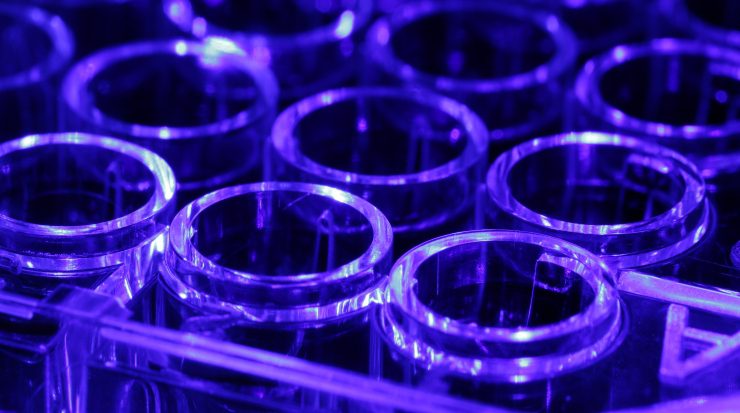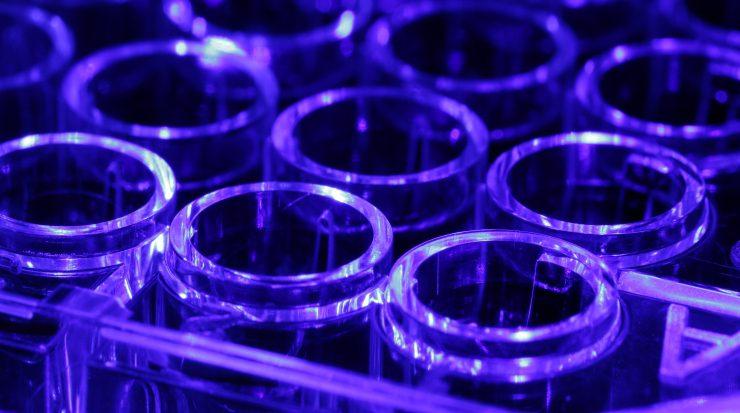Share a link
Tips for ELISA Optimization
Enzyme-linked immunosorbent assay (ELISA) is one of the most widely used immunoassay formats due to its flexibility, compatibility with automation, and its ability to provide quantitative results. While off-the-shelf ELISA kits are readily available, they do not cover every target or sample type and can also be costly, meaning researchers may need to develop an ELISA in-house.

What does an ELISA involve?
All ELISAs function by capturing a target analyte on the surface of a microplate and detecting it via an enzyme-based reaction. However, they can be configured in several different ways: direct, indirect, sandwich, and competitive ELISA. Of these, sandwich ELISA is most often used since, by employing a matched antibody pair for target capture and detection, it has higher specificity than other ELISA formats. Where secondary antibodies are incorporated into the ELISA workflow, they can improve assay sensitivity through signal amplification.
How can I optimize my ELISA?
Every step of the ELISA workflow must be carefully optimized to ensure reliable results. By following best practices for assay development, common issues such as high background, low signal, and assay variability can be prevented.
- Handle samples with care
Collecting, storing, and handling samples correctly is key to generating meaningful ELISA data. Depending on the nature of the study, samples should either be used immediately, or snap-frozen and stored at -80oC. Adding protease inhibitors to lysis buffers/sample diluents, as well as keeping samples on ice, can help preserve sample integrity and it is recommended that freeze-thaw cycles be avoided.
- Compare different coating buffers
The plate coating step should address the fact that antibodies exhibit pH-dependent behaviors. Phosphate buffered saline (PBS) at pH 7.4 and carbonate buffer at pH 9.5 are the most commonly used plate coating buffers and should be compared against each other to identify that which best supports antibody binding to the microplate.
- Test different antibody combinations and concentrations
The concentrations of analyte-specific capture and detection antibodies, as well as any secondary antibodies, all require optimization. Critically, capture and detection antibodies should each recognize a different target epitope to prevent competition for binding, while secondary antibodies should be cross-adsorbed to avoid unwanted background signal. Using a checkerboard layout allows multiple assay parameters to be compared simultaneously.
We offer a broad range of horseradish peroxidase (HRP) and alkaline phosphatase (AP) conjugated secondary antibodies that have been cross-adsorbed against serum proteins from multiple species and validated in-house for ELISA.
- Titrate the sample material
The sample material also requires titration to ensure the assay readout fits within the linear range for detection. To check that the sample matrix is not masking or artificially enhancing the signal, spike-and-recovery experiments should be carried out.
- Try using different blocking buffers
Blocking is essential to prevent assay reagents from binding non-specifically to the microplate surface. Common blocking buffers include Bovine Serum Albumin (BSA), casein, and whole normal sera, which are also typically included in antibody diluents.
Our normal donkey, goat, and rabbit sera can be used directly for blocking, or as constituents of blocking buffers and antibody diluents.
- Get the washing step right
The volume, number, and duration of washes can all influence ELISA performance. Using an automated plate washer helps ensure wash steps are consistent, as well as prevents wells from drying out by being more efficient than manual washing.
- Determine whether additional signal amplification is required
Sometimes, even when a secondary antibody is used for detection, additional signal amplification may be required. One way of achieving this is to replace enzyme-labeled secondary antibodies with biotinylated equivalents before using a streptavidin conjugate for detection.
Our labeled streptavidin products include streptavidin-HRP and streptavidin-AP, which are easily incorporated into ELISA workflows.
- Select a suitable detection system
ELISA readouts are typically colorimetric, involving enzyme-catalyzed conversion of a substrate into a soluble colored product that can be measured using a benchtop spectrophotometer. Alternatively, chemiluminescent detection may be employed to boost assay sensitivity, or fluorescently-labeled antibodies used in place of enzyme-labeled antibodies (a technique known as FLISA) to yield a readout requiring less manual intervention. The detection system should be chosen based on the amount of analyte present in the sample and the available instrumentation in the lab.
- Remember to include relevant controls
No ELISA would be complete without controls and reference standards. These respectively function to confirm that the ELISA is performing as expected and provide a standard curve against which the concentration of any test samples can be calculated. Controls and reference standards should always be diluted in the same matrix used for sample dilution to avoid introducing experimental artifacts.
We provide a comprehensive selection of standards, including human, mouse, and rat IgG subclass antibodies, as well as antibodies from various other species.
- Stick to the protocol
Once an ELISA has been fully optimized and is ready for testing experimental samples, it is important to adhere to the protocol. Even small changes such as increased incubation times or temperatures can lead to data being artificially skewed. Sourcing antibody reagents from a trusted supplier will help assure the quality of ELISA results.
All of our antibodies are produced in-house and each batch is tested against a reference standard prior to release, ensuring exceptional lot-to-lot consistency.







